This post contains spoilers for Magnetic Rose and mild spoilers for Colour out of Space and Cure. The segments in this post are mostly unrelated, so feel free to skip out any that don’t interest you.
Satoshi Kon’s films mostly have similar themes, but what’s interesting about them is how they play with those themes across genres and mediums. Most of Kon’s films deal with the interplay between our perceived reality and some kind of hidden reality that crosses over into the ‘real’ world. Across different films, that reality can take the form of dreams, the internet or cinema but the central idea of our lives reflected in a virtual mirror is one that forms the basis of much of Kon’s work, even though his films range from comedies to psychological thrillers.
Where you can see this most clearly is in the film he made twice; Magnetic Rose. Initially part of Katsuhiro Otomo’s anthology film Memories, Magnetic Rose is a film about two space junk salvagers who discover a wrecked ship sending out an unusual distress signal. In amongst the ship, they find the memories of an old opera singer come to life. Her ship has become a sanctuary for her to live out her memories, which eventually draw in the astronauts until they find their own memories intertwined with hers, while her robotic ghost wreaks havoc with the ship.
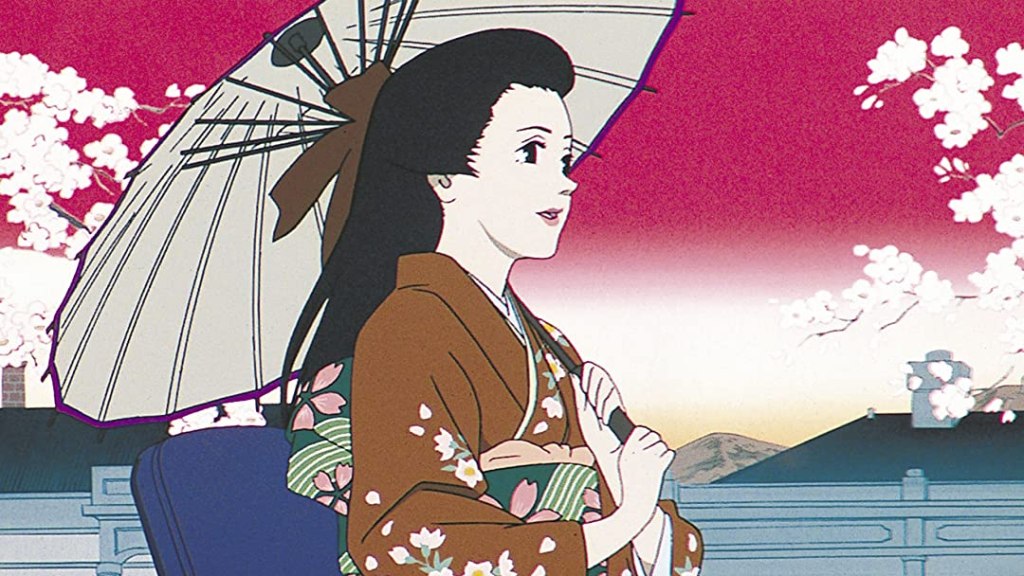
Released 6 years later, Millennium Actress tells a similar story; instead of two astronauts, the film revolves around two documentarians making a film about an old actress. The films she has starred in over the years have become like a sanctuary for her personal memories, which draw in the filmmakers until they find themselves intertwined within her memories.
There are lots of differences between the two films, but the basic plot remains strikingly similar once stripped back to the basics. Of course, the most obvious difference, besides the set dressing of science fiction in Magnetic Rose and classical Japanese cinema of Millennium Actress, is that of tone. Magnetic Rose is a sci-fi horror, while Millennium Actress is a romantic drama. To me, though, the most interesting comparison to make is how they treat the women in their stories.
In Magnetic Rose, the memory of deceased opera singer Eva Friedel is presented as a tragic villain. Scarred by the loss of her husband, she retreated into a world that she could control, where he is still with her. What’s important, though, is that she lives in a narrative which she controls. Although it has spiralled out of control, her inner world is only considered a threat when it escapes into reality and is found by two men.
In Millennium Actress, actress Chiyoko’s memories also escape from her mind, infecting both the world of the cinema and reality. However, the world that she lives in is completely governed by men. Like Eva, her memories are fixated on a man, but unlike Eva the space she inhabits is one of male control – the films she stars in are written and directed by men, and it’s unclear within Millennium Actress whether she has hijacked them for her memories or whether they have hijacked her. Kon’s work often focuses on ideas of the male gaze, but in most of his work the gaze is critiqued in a way that it isn’t here. Chiyoko exists almost exclusively within spaces created by and controlled by men, and yet this is neither challenged nor looked upon critically. Chiyoko, then, is happy surviving in male spaces but Eva, who creates her own, is villainized by the plot.

I would personally regard Kon as something close to a feminist filmmaker, because so many of his films contain critiques of the male gaze and empathetic portrayals of ordinary women in Japanese society. However, in Magnetic Rose and Millennium Actress, we can see that Kon can just as easily ignore the spaces and contexts in which these women exist. I’m not saying that this was Kon’s intention; in fact, both films can be read through a feminist lens just as, if not more easily. Taken alone, neither of the films are at all problematic, but read together and they create an interesting comparison. Putting art in these kinds of different contexts can often create new angles from which to read it, and while those angles might not always be helpful, they can be worthwhile, even if just for flexing some critical faculties.
Is Color Out of Space a Lovecraftian film? I think that really depends on what people mean by Lovecraftian; it’s a phrase that gets thrown around so much without much solid definition of what it means. Richard Stanley’s adaptation of Colour Out of Space, an H.P. Lovecraft short story, is something that definitely should be Lovecraftian given that it is a direct adaptation of a Lovecraft novel, but show me that film without that foreknowledge and I probably wouldn’t refer to it as such.
The film version of Colour Out of Space defies the conventions of the genre created by its writer by making two notable decisions. The first is in showing the threat explicitly. The original version of the story doesn’t give nearly as much description of the cosmic threat as Stanley shows in his film, occasionally to almost comic effect (see: Nic Cage’s mutant alpacas). The titular colour is even described by Lovecraft as unknowable, but in the film is rendered as a kind of magenta – a clever choice considering that colour’s non-existence on the spectrum of visible light, but still something that can be processed by the human brain. Some of this has to be chalked up to the limitations of the medium, but more creative solutions have been found in translating this particular short story into film (Die Farbe comes to mind, which is shot in black and white and uses colour only for showing areas affected by the alien), so it’s likely that Stanley found this particular element of the story not worth special consideration.

The second decision is in injecting more character into the story’s… characters. The original Colour Out of Space is told from the perspective of a surveyor interviewing another character about the family affected by the alien colour. Because of this, we only see the story of the Gardners after two layers of detachment, and not much life is really injected into their personal plight. Stanley’s adaptation keeps the surveyor, but allows him to come into direct contact with the Gardners, who all get much more direct screen time in the story and are allowed to have personality beyond that which is hinted at vaguely by a distant narrator.
This too, however, can be seen as a limitation of the medium. Film requires more direct interaction with character, and so can’t be told in the same way as many of Lovecraft’s stories are – by some figure on the sidelines. Because of this, it seems unlikely that film as a medium can ever truly capture a ‘Lovecraftian’ spirit. It’s even debatable whether this is something worth aiming for in the first place, given that I personally don’t enjoy Lovecraft’s style of writing.
If I were to posit one film as being truly ‘Lovecraftian’, it would probably be Kiyoshi Kurosawa’s 1997 detective film Cure. Kurosawa’s film isn’t traditionally thought of as particularly Lovecraftian, being more inspired by American and J-horror films, as well as contemporary Japanese detective dramas. Bong Joon-Ho claimed the film as one of his favourites and an inspiration in the making of Memories of Murder, although the films share only superficial resemblance.
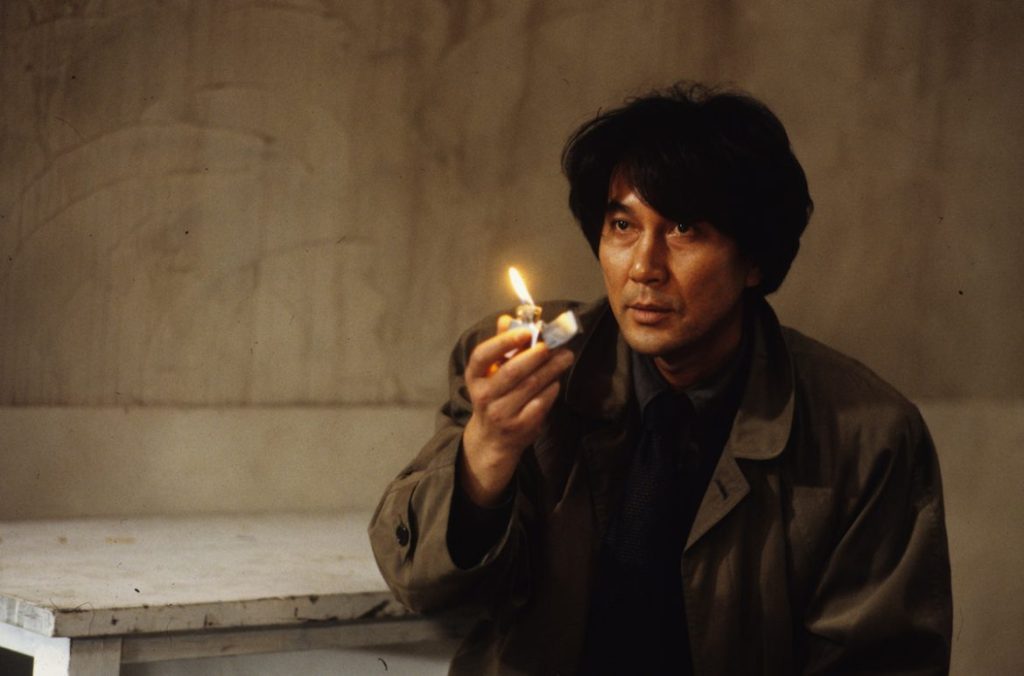
Still, Cure captures the essence of Lovecraft in a way that direct adaptations like Color Out of Space can’t, perhaps because it is an original story conceived for the screen. The threat in Cure is not cosmic, but it is unknowable in a way that is far more chilling than the body horror monstrosities of Stanley’s film. What’s more, this is a purely cinematic threat; one that relies on Kurosawa’s detached camera and slow editing to instill what are common sights – a lighter flickering, or drops of water on a floor – into something terrifying. It’s specifically terrifying in that way that Lovecraft’s best ideas represent. It’s scary because you aren’t entirely sure what you’re looking at or how it works. Even when the threat at the end of Cure is explained, the explanation isn’t satisfactory. The explanation of Cure would be like explaining Colour Out of Space by saying it’s an alien. That’s true, but it doesn’t give satisfactory closure to the problem.
What’s more, although the characters of Cure may have some more depth to them than Lovecraft’s characters, the focus of the film on a detective investigating a series of mysterious killings is a trope that Lovecraft himself used as a distancing technique. Cure does show the victims of the ‘killer’, but never really gives them much beyond the most basic sketches of character, focusing more on the detective and his slow descent into madness – another trope common to Lovecraft’s stories. Kurosawa is also able to communicate this madness in ways better than Lovecraft could, and even better than Nic Cage can – by using jarring cuts and showing the viewer the protagonist’s delusions first hand, Kurosawa creates a vision of madness that infects even the viewer.
People might not normally consider Cure to be Lovecraftian, perhaps because it doesn’t actually focus on anything cosmic. But the spirit of Lovecraft’s stories runs through Cure, and in creating an original work that plays on Kurosawa’s strengths as a filmmaker, Cure is a scarier vision of the unknowable horror of Lovecraft’s work than either he or those who draw more directly from him could conjure.
The recent films of Adam McKay, The Big Short and Vice are both overtly political affairs, with the former tracking the course of the 2008 economic crash and the latter addressing Dick Cheney’s rise to power. McKay is more than explicit in these films about his political opinions than he perhaps needs to be – everything is spelled out as if the audience are children who need to be spoon-fed their information in the form of mildly comedic slideshows.
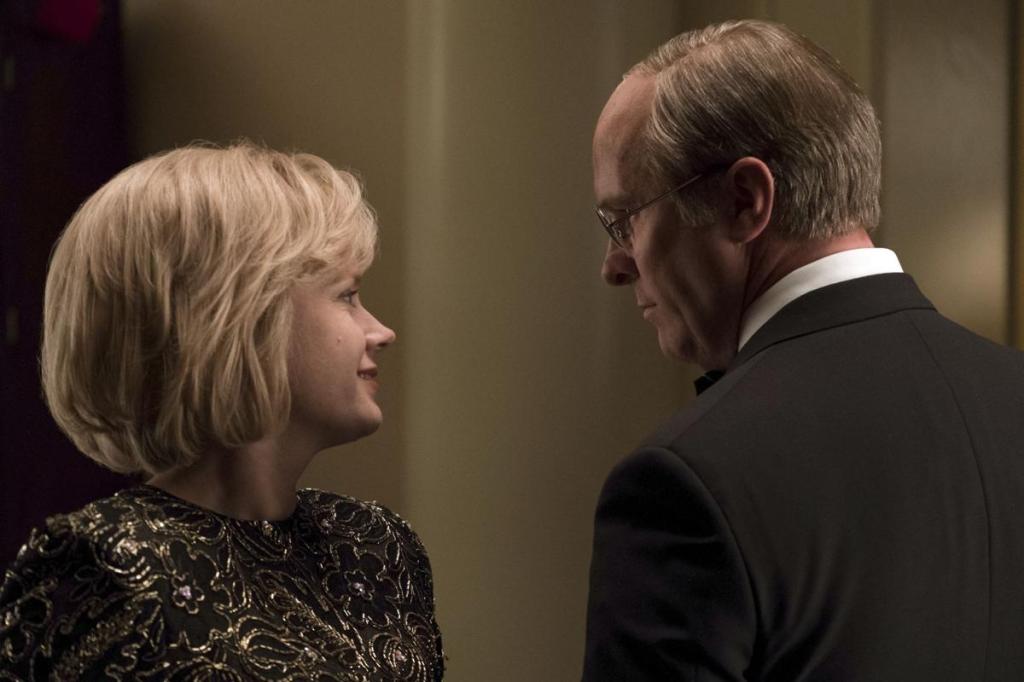
For the purposes of The Big Short, which tells a lesser known and more complicated story of the people who bet against the housing market in 2007 to great financial reward, this storytelling method works. But in Vice, which tells a much more well known and less complicated story, the effect is one that is mainly patronising, looking down on its audience and accusing them of complacency for allowing a system that could see Cheney and Bush rise to political power.
Still, both films seem a far cry from where McKay started, with Will Ferrell comedies such as Anchorman and Step Brothers. The question is, is this as sharp a career turn as one might think? I actually think perhaps not. McKay’s films are certainly more overtly political now, but they might actually be less interesting for it. The Big Short is probably McKay’s best film, but Vice shows that his new style isn’t foolproof, so it’s worth looking back at his old films to see how they handle their politics.
Anchorman: The Legend of Ron Burgundy and Talladega Nights: The Ballad of Ricky Bobby were both made during the Bush administration depicted in Vice and focus on Ferrell playing the typical kind of man child that he’s famous for. Neither film seems particularly political, but each has hints of McKay’s liberal ideology. Anchorman depicts a 70s news anchor coming to terms with women entering typically male-dominated spaces, while Talladega Nights is a skewering of a particular kind of middle American masculinity. That film doesn’t comment explicitly on politics or progressivism, but in depicting a certain kind of mindset, McKay ends up saying more about the Bush years than he can in Vice. Ricky Bobby is perhaps the quintessential Republican voter of that time, and the film’s exaggerated look at a slice of American culture functions as valuable satire.

The Other Guys seems to be the obvious crossing-over point for McKay’s preoccupations to move from American idiots to the flaws in the structure of American capitalism itself. Ferrell even scales back from playing man-child to mild mannered accountant in the film, although Mark Whalberg picks up the slack in that department. While the main bulk of The Other Guys is a pretty standard set-up of a police action film, running through the background is a more interesting story of how a Ponzi scheme works to rob pension funds. The film even ends with a slideshow explanation of this kind of scheme, from which the shift to The Big Short and Vice seems seamless.
Still, there’s something in McKay’s earlier films that he hasn’t quite recaptured in his later experiments. As egregiously terrible as Ron Burgundy or Ricky Bobby might be at the start of their respective films, each one allows them to grow as characters and become better people by the end of it. It’s perhaps overly optimistic as a view on humanity, but for a comedy it works well.
In a film like Vice, however, McKay doesn’t show much except for contempt for someone like Ricky Bobby. Although the American voting public don’t show up in that film, McKay looks down on them in the meta-textual tone of the film, as well as in a shockingly poorly thought out end credits sequence. It’s reasonable in the wake of Donald Trump to develop a cynical contempt for the American voting public, many of whom might be beyond redemption, but I also don’t think the sweeping disregard for them McKay shows in Vice is helpful either. It’s interesting to me to see a filmmaker realise how much those at the top lie and purposely mislead the working class in order to bolster their own power and line their own pockets, but then uses his films to blame those working class for it.
I wouldn’t suggest McKay make a film like Hillbilly Elegy, nor do I have sympathy in my heart for those who vote for Conservative parties. But it might be worth McKay not completely abandoning the humanity he had in his earlier films in order to make his newer, more “important” films better. In The Big Short, Brad Pitt’s character rightfully reminds his friends not to celebrate at the money they made betting against the housing market. Millions of people lost their jobs and homes during the recession, mainly because they were misled by those looking to serve themselves. McKay treads the line well in that film, and I hope he doesn’t continue in the direction set by Vice.
When I was younger and occasionally asked who my ‘hero’ was, my predictably contrarian answer was ‘Roger Ebert’. It wasn’t that I read everything that Ebert wrote or published, or that I necessarily saw him as some kind of god of film criticism, but that I was in awe that someone in that field of work had become so popular and famous. Ebert was the name synonymous with the thing I was most interested in, so it was natural that I idolised him.
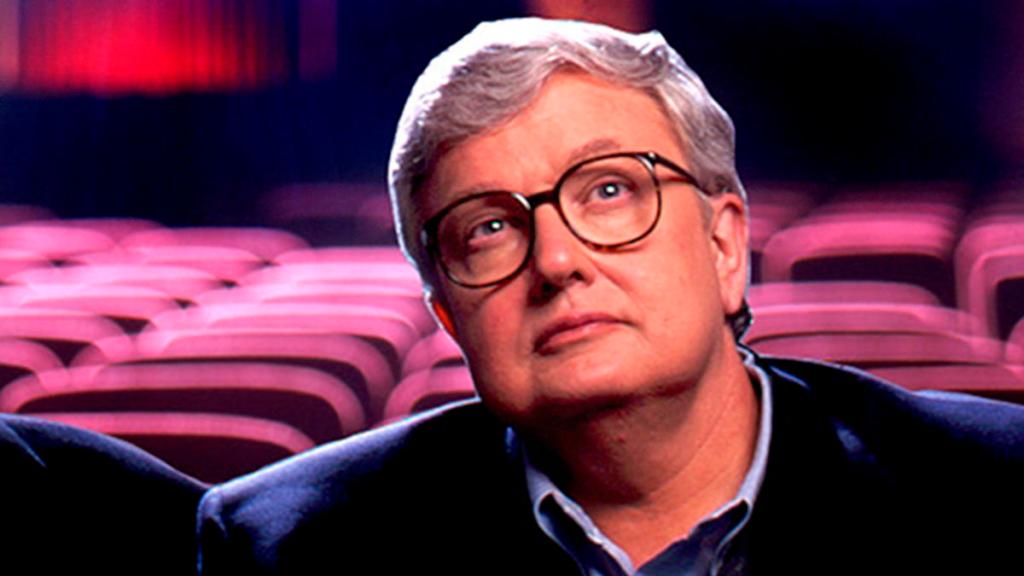
After Ebert’s passing in 2013, my go-to film critic became the UK film critic Mark Kermode, who co-hosts the radio show ‘Kermode and Mayo’s Film Review’. What I liked, and indeed still like about Kermode, is his pointed lack of pretension. Starting his career reviewing straight-to-video horror B-movies has, I think, given Kermode a sense of perspective on cinema that is refreshing when compared to some of the other critics I read. Although I find myself disagreeing with many of his claims, it’s sometimes nice to see that someone who is paid to review films is able to say that Love Actually is a film he prefers to something like I’m Thinking of Ending Things. These perspectives are valuable and reinforce the notion of cinema as the most public and accessible form of art, a viewpoint that I strongly support. Although I tend to write about films that open themselves up to more analysis, I like to believe that anything from surreal animation biopics to Will Ferrell comedies are worth talking about and discussing with the same level of respect. It’s all art, after all.
Game critics tend not to have this kind of snootiness. I think this is because of the age of the medium -as a young medium, games are still developing a hierarchy of what will be considered their equivalent of ‘high art’. Sure, there are some games that clearly have more on their mind in terms of making wider cultural themes. Metal Gear Solid 2 is more conceptually interesting than Super Mario Galaxy 2, but what I admire about game critics is that most will treat both with an equal level of reverence, because Mario has such polished and interesting gameplay and might be more worthwhile to a larger audience than Metal Gear. Even licensed games or ‘shovelware’ can get critical appraisal if they have enough interesting ideas. Maybe one day there will be game critics who dismiss Mario as nothing more than a series of polished blockbusters for children, but I hope game criticism keeps its comparatively more level playing field.

In terms of game critics, it’s sometimes harder to keep track of the individual critics amongst the noise of big banner websites like IGN or Gamespot. Because of that, people often turn to other, more democratic sources of video game criticism, such as individual YouTube channels. Of those, my favourite critic and one of the few people I would consider a real inspiration to this site, is matthewmatosis. He’s such a big influence on my work that this post itself is based on his Mega Microvideos series (an inspiration that has helped me clear out a huge backlog of review ideas from my notes app).
Still, I don’t agree with him on everything. It’s always important that you regard critics you read with a sense of distance. This is just one person’s opinion and disagreeing with it is not a form of rejecting their work. Criticism is just giving one opinion and hoping it can add to the greater discourse, even if only to be refuted by someone else.
To give one example of a disagreement I had with matthewmatosis, take a look at his video review of Death Stranding. In it, he talks about the natural advantage video games have over films in regards to casting roles. Here, we can perhaps see his limitations as a critic who reviews only video games. He mentions that actors are praised for their ability as chameleons, showing clips of Daniel Day-Lewis, and then says ‘seeing a recognisable person might reassure potential viewers that they’re in for a good performance, but it doesn’t improve the performance itself. It has the opposite effect.’ He then goes on to say games that don’t take advantage of their medium by changing the look of the performer are shooting themselves in the foot.
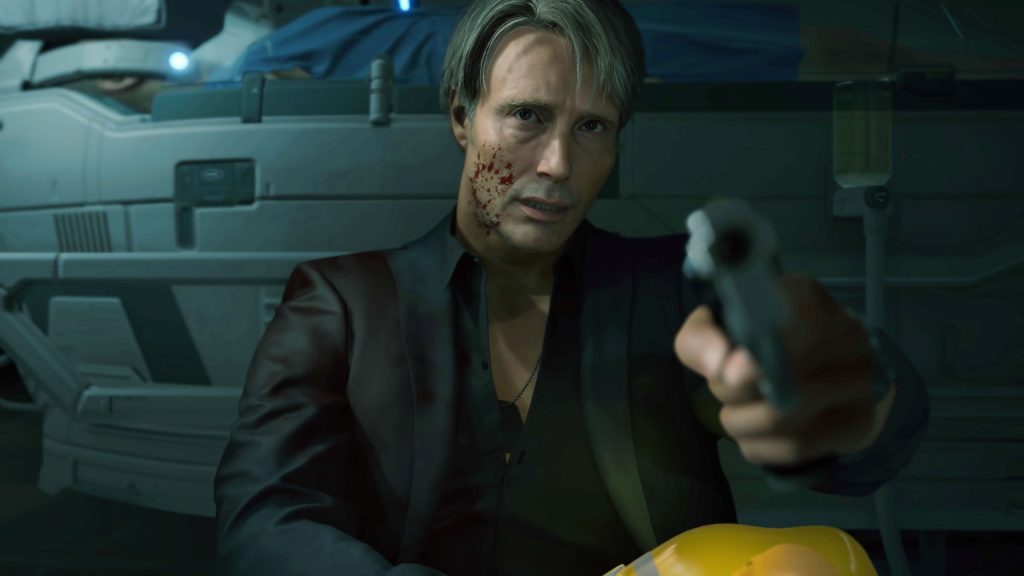
This might well be true in the case of Death Stranding, and I agree with his later conclusion that motion capturing the faces of Kojima’s famous friends is a slightly strange way of taking the player out of the world for no apparent reason or gain. Still, he manages to forget something important in this analysis, which is what I talked about in my review of On the Rocks, and that is the effect of stunt casting. Occasionally casting directors will cast an actor not for their ability to blend into a role but for their preconceived image in the mind of the audience, either to play to type or to play against type. Day Lewis is such an important actor because he is an exception to this rule – for every chameleon like him, there’s ten actors like Tom Hanks, who a director might cast because they’re a known entity.
This actually works in video games as well. Norman Reedus might not have the star power to pull this off, but the casting of Mads Mikklesen certainly lends something to the character of Cliff. Most recently and notably, there’s the casting of Keanu Reeves as punk rocker Johnny Silverhand in Cyberpunk 2077. Reeves’ casting was met with a lot of acclaim before his character was really known, perhaps because he’s a famous and likeable face and because he’s starred in cyberpunk-esque films before with The Matrix series. But hiring Reeves ended up being more than a marketing stunt in the context of the game itself. Silverhand, who is stuck in your head throughout the game, is an extremely unlikable character – he’s abrasive, rude, sexist and obnoxious. However, with a face as beloved as Reeves’ it becomes much easier for players to see the more human side of Johnny. Cast an unknown for this part and it’s possible they might be good enough to allow players to warm to Johnny Silverhand over time, but sometimes you need a recognisable face like Reeves in order to achieve this effect from the get-go.
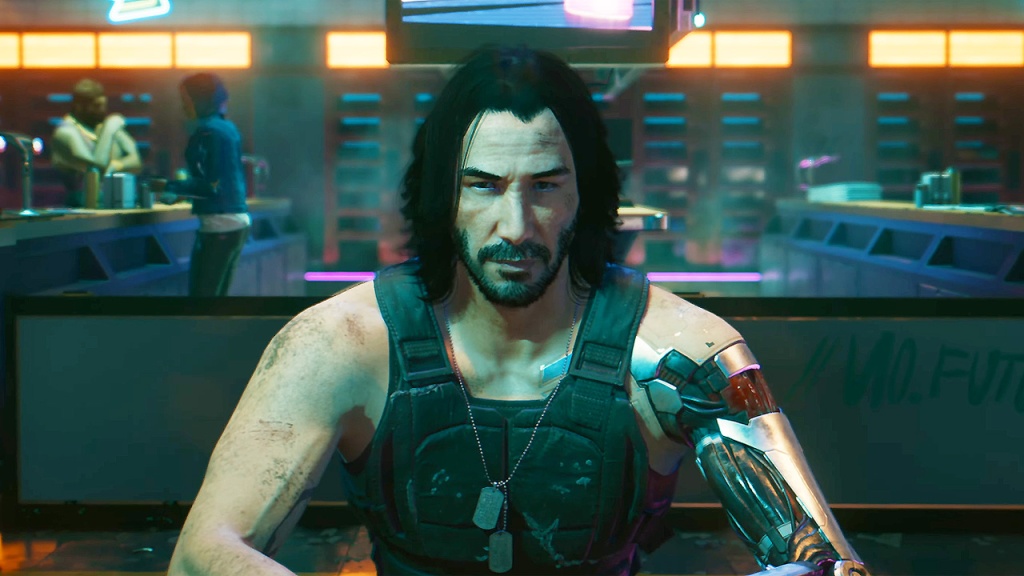
One point I’m surprised was missed in matthewmatosis’ review is the longevity of these decisions. In a hundred years, when people have forgotten who Norman Reedus was, the negative effects of casting him will have disappeared. But this also means the cultural context of Keanu Reeves will have gone, and Cyberpunk 2077 might well play differently in regards to how audiences view Johnny Silverhand. In film classes, we’re often taught about the public perception of actors at the time they were working, in order to understand why they might have been cast in a film. So some people might learn about what commenters on reddit were saying about Keanu, but will someone plugging Cyberpunk into their retro console on a whim understand why casting him was important? I imagine not. In this way, I think the conversation on casting actors in video games becomes even more complicated.
It’s not that matthewmatosis is necessarily wrong in his statement about Death Stranding, but I think the way it’s phrased shows that he perhaps isn’t as knowledgeable about other mediums as he is about games. There’s benefits to being a focused critic like he is, and to casting your net wider like I try to. In reviewing both games and films, I rarely have enough time to keep up with both to a sufficient extent. But more knowledge of the broader pop culture spectrum can occasionally come in useful. What’s important as a reader is knowing the limitations of any critic and reading or watching their work as just one small part of a much broader conversation on art.
Thanks for reading, and I hope you enjoyed this slightly more unconventional take on a post. It was certainly useful for getting ideas out of my head, and there will be more like this to come. As always, you can follow me on twitter or donate on patreon.

